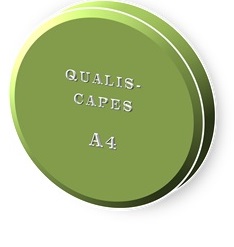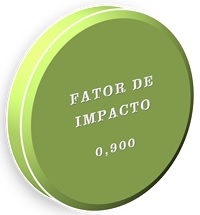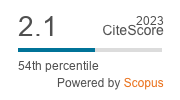Ação dos elicitores abióticos e soluções nutritivas em pimentão amarelo utilizando sistema hidropônico
DOI:
https://doi.org/10.1590/1983-21252025v3812776rcPalavras-chave:
Capsicum annuum L.. Estresse salino. Tolerância.Resumo
Objetivou-se com este trabalho avaliar os teores de pigmentos fotossintéticos, crescimento e produção de pimentão amarelo sob soluções nutritivas salinas e aplicação de elicitores abióticos em sistema hidropônico. O trabalho foi conduzido em casa de vegetação pertencente à Universidade Federal de Campina Grande, Campus Pombal – PB. O cultivo foi realizado em sistema hidropônico, utilizando delineamento inteiramente casualizados, com parcelas subdividida. As parcelas principais consistiram de três níveis de condutividade elétrica da solução nutritiva - CEsn (2,1; 3,1 e 4,1 dS m-1) enquanto as subparcelas incluíram os elicitores abióticos (testemunha; ácido salicílico, prolina e peróxido de hidrogênio), com três repetições. As concentrações de ácido salicílico, prolina e peróxido de hidrogênio foram de 3,6 mM; 10 mM e 40 μM, respectivamente. O ácido salicílico na concentração de 3,6 mM proporcionou menor crescimento em altura de plantas do pimentão sob CEsn de 2,1 dS m-1. Contudo, o ácido salicílico, prolina e peróxido de hidrogênio na concentração de 3,6 mM; 10 mM e 40 μM, respectivamente, aumentaram a síntese de pigmentos fotossintéticos e o acúmulo de fitomassa. A utilização de 40 μM de peróxido de hidrogênio e 3,6 mM de ácido salicílico resultou em maiores teores de clorofila total, carotenoides e fitomassa seca total do pimentão sob CEsn de 4,1 dS m-1. A CEsn de até 3,1 dS m-1 promoveu maior número de frutos no pimentão.
Downloads
Referências
AHMAD, A. et al. Effect of exogenous application of osmolytes on growth and yield of wheat under drought conditions. Journal of Environmental and Agricultural Sciences, 21: 6-13, 2019.
ALMEIDA, A. H. B.; ALMEIDA, H. S. A.; OLIVEIRA, M. K. T. Perspectivas da gestão hídrica no semiárido brasileiro para a irrigação. Disciplinarum Scientia| Naturais e Tecnológicas, 22: 119-132, 2021.
ALVARES, C. A. et al. Koppen’s climate classification map for Brazil. Meteorologische Zeitschrift, 22: 711-728, 2013.
ARAGÃO, J. et al. Hydrogen peroxide in the mitigation of salt stress in bell pepper. Semina: Ciências Agrárias, 44: 217-236, 2023.
ARNON, D. I. Copper enzymes in isolated cloroplasts: polyphenoloxidases in Beta vulgaris. Plant Physiology, 24: 1-15, 1949.
BAYRAM, D.; DINLER, B.S.; TASCI, E. Differential response of bean (Phaseolus vulgaris L.) roots and leaves to salinity in soil and hydroponic culture. Notulae Botanicae Horti Agrobotanici Cluj-Napoca, 42: 219-226, 2014.
BOUZROUD, S. et al. Salt stress responses and alleviation strategies in legumes: a review of the current knowledge. 3 Biotech, 13: e287, 2023.
DORNELES, A. O. S. et al. Responses of Solanum tuberosum L. to water deficit by matric or osmotic induction. Potato Research, 64: 515-534, 2021.
EL MOUKHTARI, A. et al. How does proline treatment promote salt stress tolerance during crop plant development? Frontiers in Plant Science, 11:e553924, 2020.
FARHADI, N.; GHASSEMI-GOLEZANI, K. Physiological changes of Mentha pulegium in response to exogenous salicylic acid under salinity. Scientia Horticulturae, 267: e109325, 2020.
FENG, D. et al. Categories of exogenous substances and their effect on alleviation of plant salt stress. European Journal of Agronomy, 142: e126656, 2023.
GUEDES, M. A. et al. H2O2 as attenuator of salt stress on the physiology and growth of hydroponic cherry tomato. Revista Caatinga, 37: e12002, 2024.
HOAGLAND, D. R.; ARNON, D. I. The water-culture method for growing plants without soil. 2. ed. Circular. Berkeley: California Agricultural Experiment Station, 1950. n. 347, 32 p.
IBGE - Instituto Brasileiro de Geografia e Estatística. Sistema IBGE de recuperação automática – SIDRA: censo agropecuário 2017. Resultados definitivos. 2017. Available at: <https://sidra.ibge.gov.br/pesquisa/censo-agropecuario/censo-agropecuario-2017>. Access on: May 2, 2025.
LICHTENTHALER, H. K.; BABANI, F. Contents of photosynthetic pigments and ratios of chlorophyll a/b and chlorophylls to carotenoids (a+b)/(x+c) in C4 plants as compared to C3 plants. Photosynthetica, 60: 3-9, 2022.
LIMA, G. S. et al. Irrigação com águas salinas e aplicação de prolina foliar em cultivo de pimentão ‘All Big’. Comunicata Scientiae, 7: 513-522, 2016.
MARENGO, J. A. et al. Assessing drought in the drylands of northeast Brazil under regional warming exceeding 4 ºC. Natural Hazards, 103: 2589-2611, 2020.
MENDONÇA, A. J. T. et al. Salicylic acid modulates okra tolerance to salt stress in hydroponic system. Agriculture, 12: e1687, 2022.
OLATUNJI, T. L.; AFOLAYAN, A. J. The suitability of chili pepper (Capsicum annuum L.) for alleviating human micronutrient dietary deficiencies: A review. Food Science & Nutrition, 6: 2239-2251, 2018.
RICHARDS, L. A. Diagnosis and improvement of saline and alkali soils. 1. ed. Washington: U. S. Department of Agriculture, 1954. 160 p. (Agriculture Handbook, 60).
SANTOS, A. C. et al. Brackish water: an option for producing hydroponic Capsicum annuum in laminar flows of mineral nutrients. Revista Colombiana de Ciencias Horticolas, 12: 147-155, 2018.
SCOTTI-CAMPOS, P. et al. Physiological responses and membrane integrity in three Vigna genotypes with contrasting drought tolerance. Emirates Journal of Food and Agriculture, 25: 1002-1013, 2013.
SHARMA, A. et al. Phytohormones regulate accumulation of osmolytes under abiotic stress. Biomolecules, 9: e285, 2019.
SHARMA, P. et al. Reactive oxygen species, oxidative damage, and antioxidative defense mechanism in plants under stressful conditions. Journal of Botany, 2012: e217037, 2012.
SIDDIQUI, S. A. et al. Photosynthetic gas exchange and chlorophyll a fluorescence in Salicornia brachiata (Roxb.) under osmotic stress. Journal of Plant Growth Regulation, 41: 429-444, 2022.
SILVA, A. A. R. et al. Salicylic acid alleviates the effects of salt stress on the physiology, growth, and production of hydroponic okra. Arid Land Research and Management, 37: 602-618, 2023.
SILVA, A. A. R. et al. Salicylic acid as an attenuator of salt stress in soursop. Revista Caatinga, 33: 1092-1101, 2020.
SIMKIN, A. J. et al. The role of photosynthesis related pigments in light harvesting, photoprotection and enhancement of photosynthetic yield in plant. Photosynthesis Research, 152: 23-42, 2022.
VELOSO, L. L. S. A. et al. H2O2 alleviates salt stress effects on photochemical efficiency and photosynthetic pigments of cotton genotypes. Revista Brasileira de Engenharia Agrícola e Ambiental, 27: 34-41, 2023.
WEATHERLEY, P. E. Studies in the water relations of the cotton plant. I - the field measurements of water deficits in leaves. New Phytologist, 49: 81-87, 1950.
Downloads
Publicado
Edição
Seção
Licença
Os Autores que publicam na Revista Caatinga concordam com os seguintes termos:
a) Os Autores mantêm os direitos autorais e concedem à revista o direito de primeira publicação, com o trabalho simultaneamente licenciado sob a Licença Creative Commons do tipo atribuição CC-BY, para todo o conteúdo do periódico, exceto onde estiver identificado, que permite o compartilhamento do trabalho com reconhecimento da autoria e publicação inicial nesta revista, sem fins comerciais.
b) Os Autores têm autorização para distribuição não-exclusiva da versão do trabalho publicada nesta revista (ex.: publicar em repositório institucional ou como capítulo de livro), com reconhecimento de autoria e publicação inicial nesta revista.
c) Os Autores têm permissão e são estimulados a publicar e distribuir seu trabalho online (ex.: em repositórios institucionais ou na sua página pessoal) a qualquer ponto antes ou durante o processo editorial, já que isso pode gerar alterações produtivas, bem como aumentar o impacto e a citação do trabalho publicado (Veja O Efeito do Acesso Livre).







